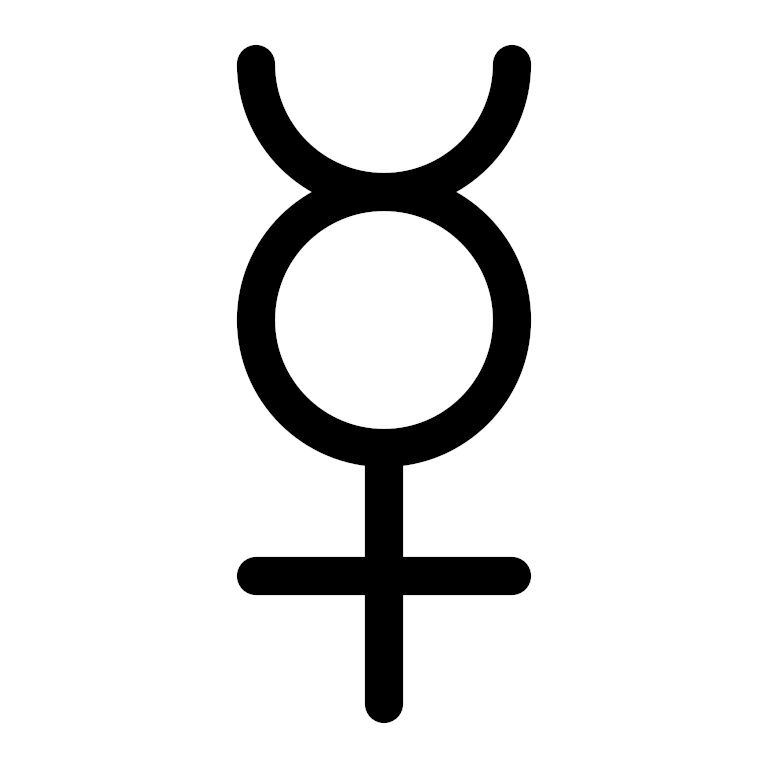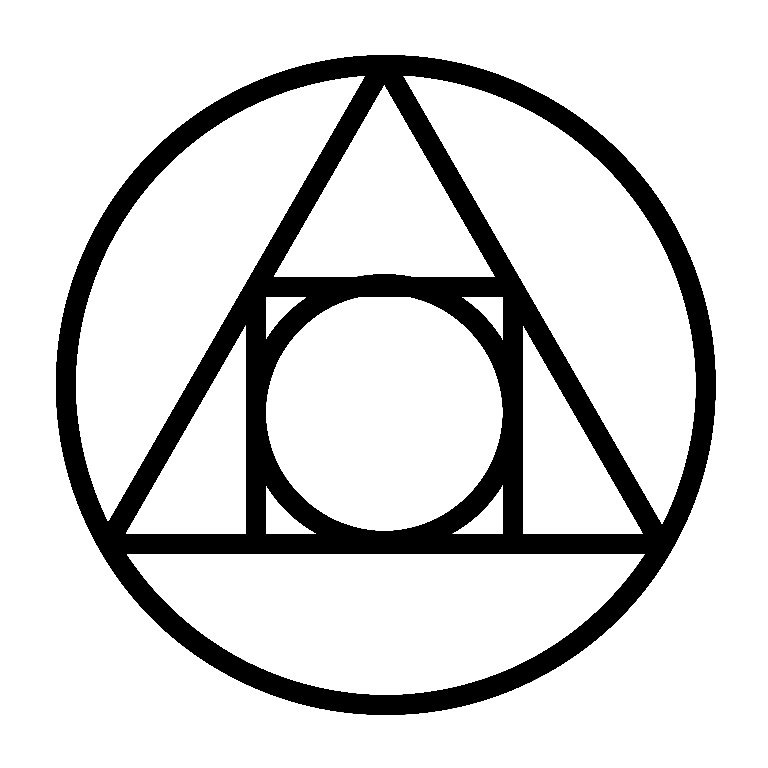The Alchemical Symbol for Mercury

The Alchemical Symbol for Mercury
Origins and Development
The symbol for Mercury (☿), a circle topped by a crescent and resting upon a cross, is among the oldest of the Hermetic signs. It merges three primordial shapes — the lunar crescent (soul), the solar circle (spirit), and the cross (matter) — to represent the unity of heaven and earth within a single principle.
The glyph evolved from the Greek symbol of Hermes, the messenger god whose caduceus (a winged staff entwined by serpents) became the classical emblem of mediation and transformation. By the Hellenistic and Roman periods, Hermes and the Egyptian Thoth had been syncretized into Hermes Trismegistus, patron of alchemy and divine wisdom.
Mercury, as the Roman form of Hermes, symbolized communication, exchange, and the transmission of subtle forces — ideas mirrored in the behavior of the liquid metal quicksilver. When medieval alchemists inherited this image, they saw in metallic mercury the very prototype of transformation: elusive, reflective, mutable, and incorruptible.
Philosophical and Alchemical Meaning
Mercury was viewed as the mediating principle — the bridge between body and spirit. In Paracelsian doctrine, it formed one of the tria prima, the three philosophical principles alongside Sulfur (soul) and Salt (body).
Where Sulfur represented energy and combustibility, Mercury represented volatility, fluidity, and intelligence — the power of movement and union. It was both the messenger and the medium through which transmutation occurred.
Core correspondences:
-
Planet: Mercury
-
Metal: Quicksilver (hydrargyrum)
-
Quality: Cold and moist
-
Direction: East
-
Color: Silver-gray or reflective
-
Symbolic archetype: Androgyny, duality reconciled
In alchemical cosmology, Mercury unites opposites — male and female, fixed and volatile, light and dark. It was often termed “the Green Lion” or “the Spirit of the Stone”, the animating breath that dissolves and reconstitutes forms.
Mercury in Historical Texts
In Zosimos of Panopolis (3rd–4th century CE), Mercury appears as both material and spiritual agent: a “divine water” capable of dissolving metals and regenerating bodies.
By the Renaissance, Heinrich Khunrath’s Amphitheatrum Sapientiae Aeternae (1595) and Robert Fludd’s cosmological engravings placed Mercury at the center of the alchemical cosmos — the axis of correspondence between heaven and earth.
In Basil Valentine’s Triumphal Chariot of Antimony, Mercury is “the mother and father of the metals,” embodying the hermaphroditic principle that underlies all generation. It is from Mercury, said the adepts, that both gold and lead are born — and through it, both may return to their source.
The Philosophical Mercury
Alchemists distinguished between common (vulgar) mercury and philosophical Mercury:
-
Common Mercury — the physical metal, used in amalgams and experiments.
-
Philosophical Mercury — the universal solvent, the subtle essence pervading all matter, sometimes identified with the Spirit of Nature or Anima Mundi.
In this sense, Mercury was not merely a material, but a metaphysical principle: the agent of transformation itself.
In Deciphering the Method, Mercury is analyzed as the “living solvent” — the fluid state through which matter becomes receptive to spiritual infusion. Similarly, in the Book of Aquarius, Mercury is equated with the hidden moisture or vital water within all life — the means by which the Stone’s fermentation proceeds.
Symbolic Paradoxes
Because Mercury unites all opposites, it was called “the double dragon” or “serpent of the philosophers.”
It could both kill and heal, corrode and perfect.
In alchemical imagery:
-
Winged Mercury represents sublimation, the spirit rising.
-
Wingless Mercury symbolizes condensation, the spirit descending into matter.
This rhythm — ascent and return — defines the entire Hermetic process.
Relation to the Sun and Gold
Mercury was said to “marry” Sulfur (Fire) to produce Gold (the perfected body). In this triad, Mercury acts as the feminine and receptive medium, the womb of transmutation.
Hence the alchemists’ dictum:
“Without Mercury, no work can begin; without the Sun, no work can be completed.”
In The Triangular Book of Saint-Germain, the invocation of “aerial spirits” through symbols and circles echoes Mercury’s domain — communication between realms. The book’s geometric operations can thus be viewed as Mercurial rituals of mediation between above and below.
Links
Table
